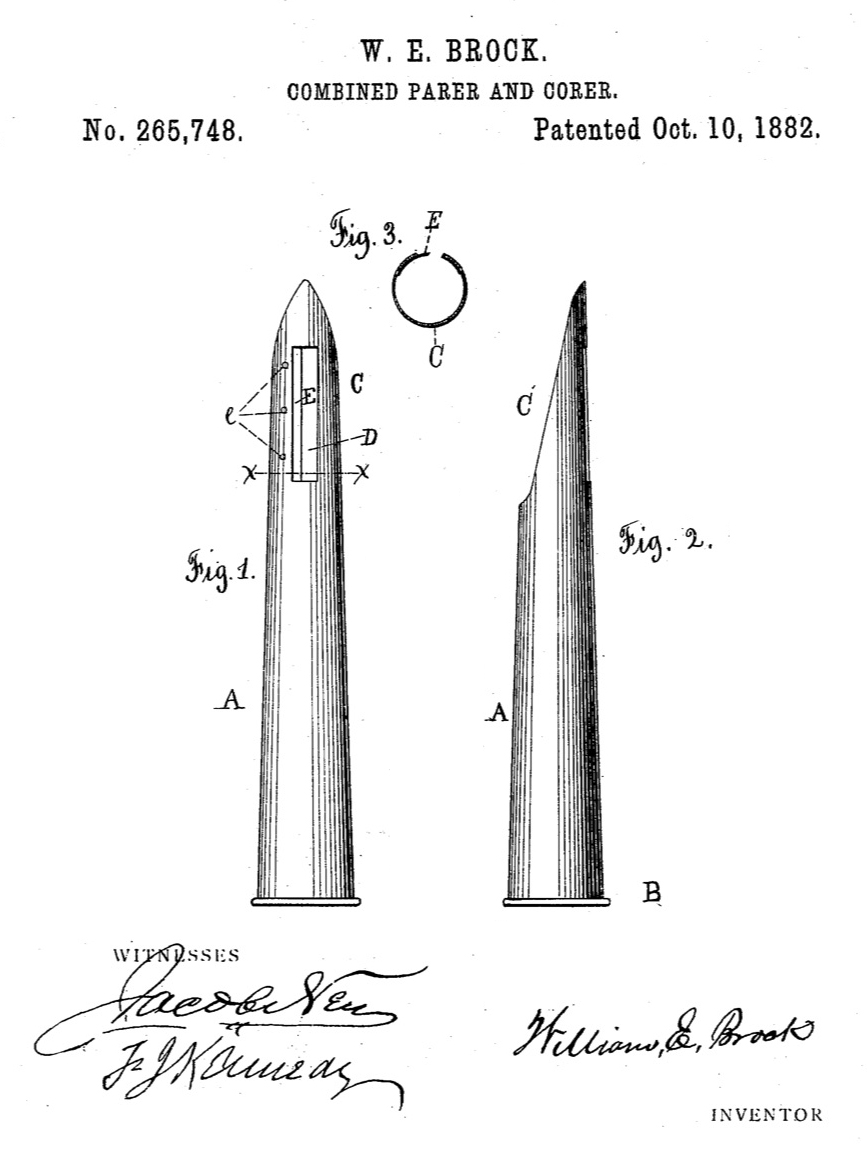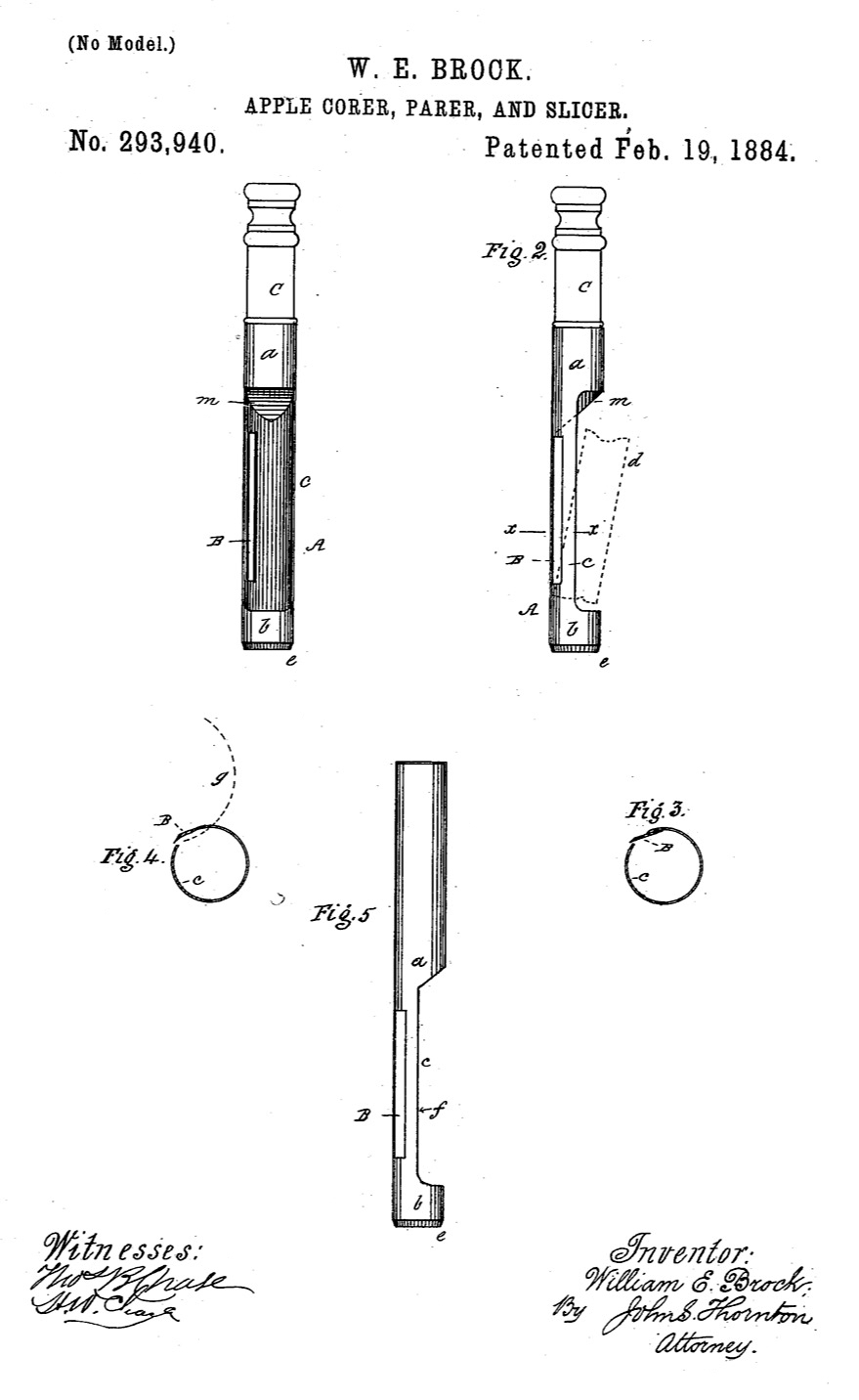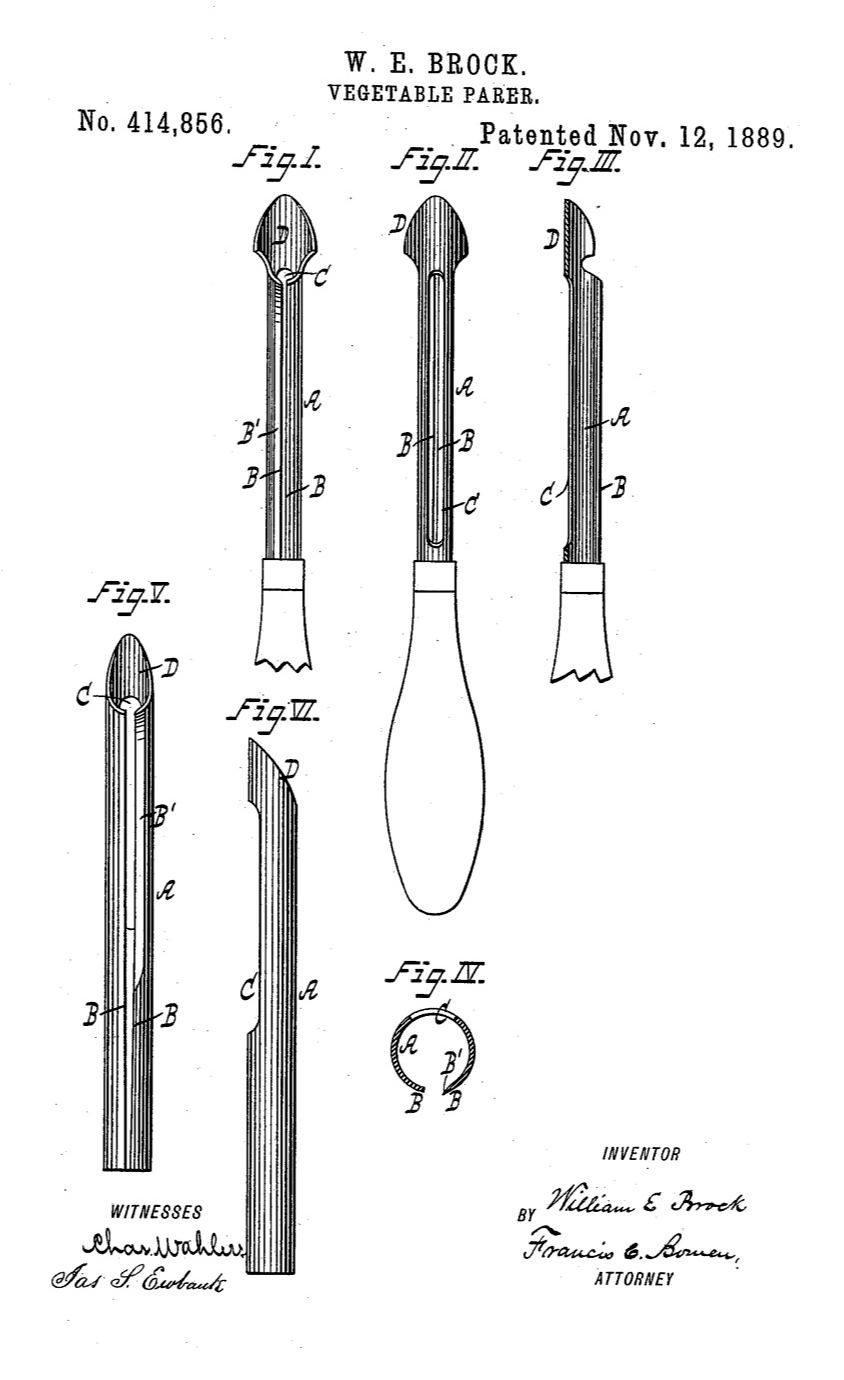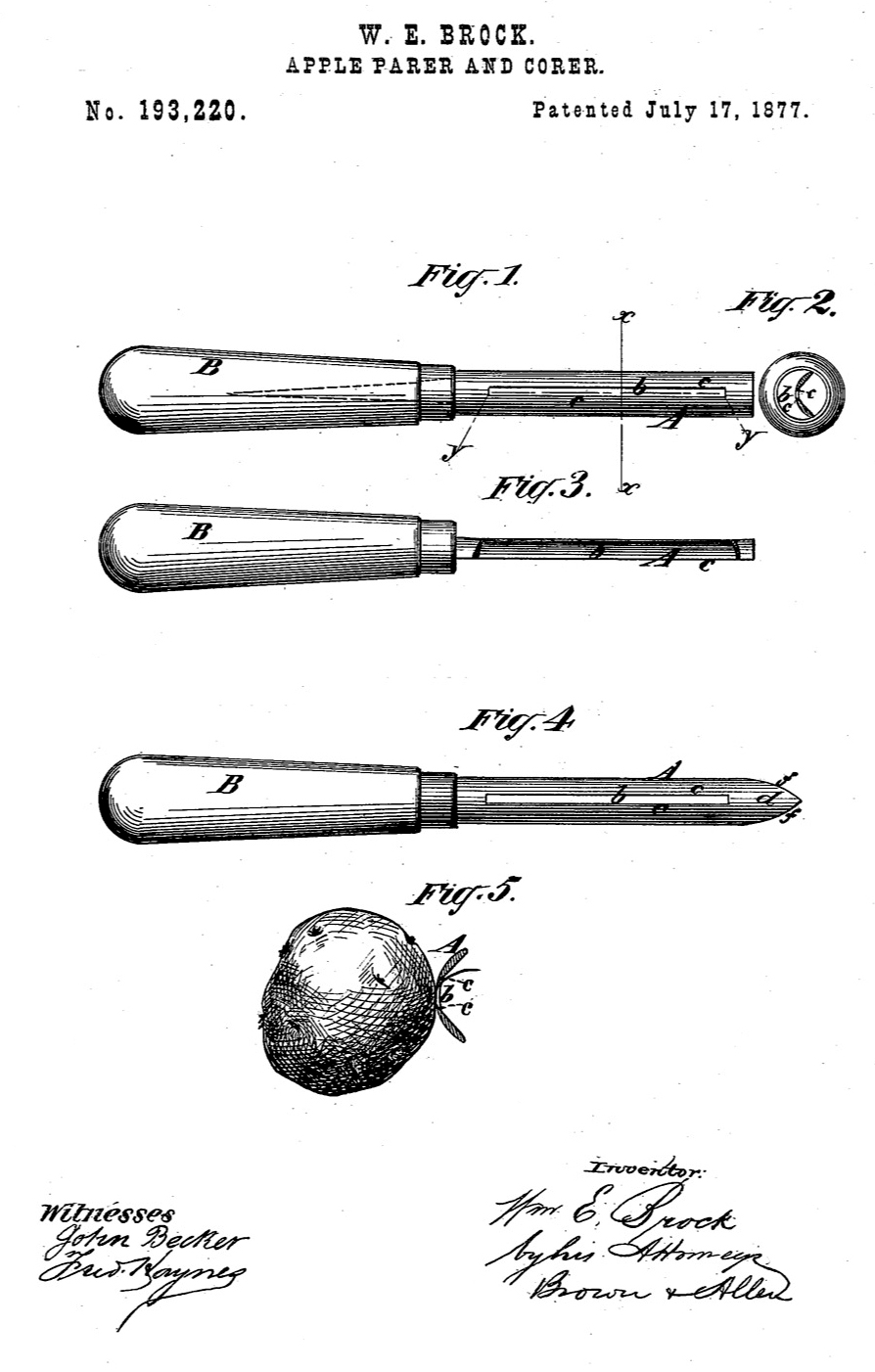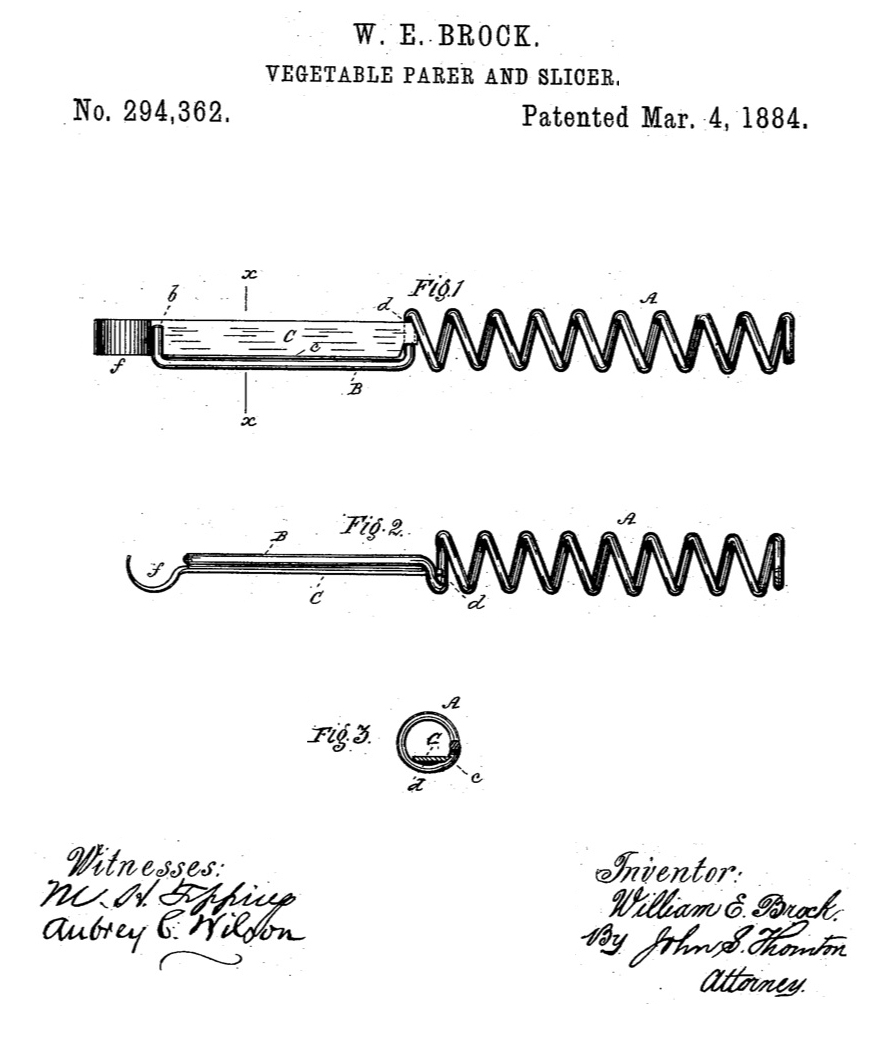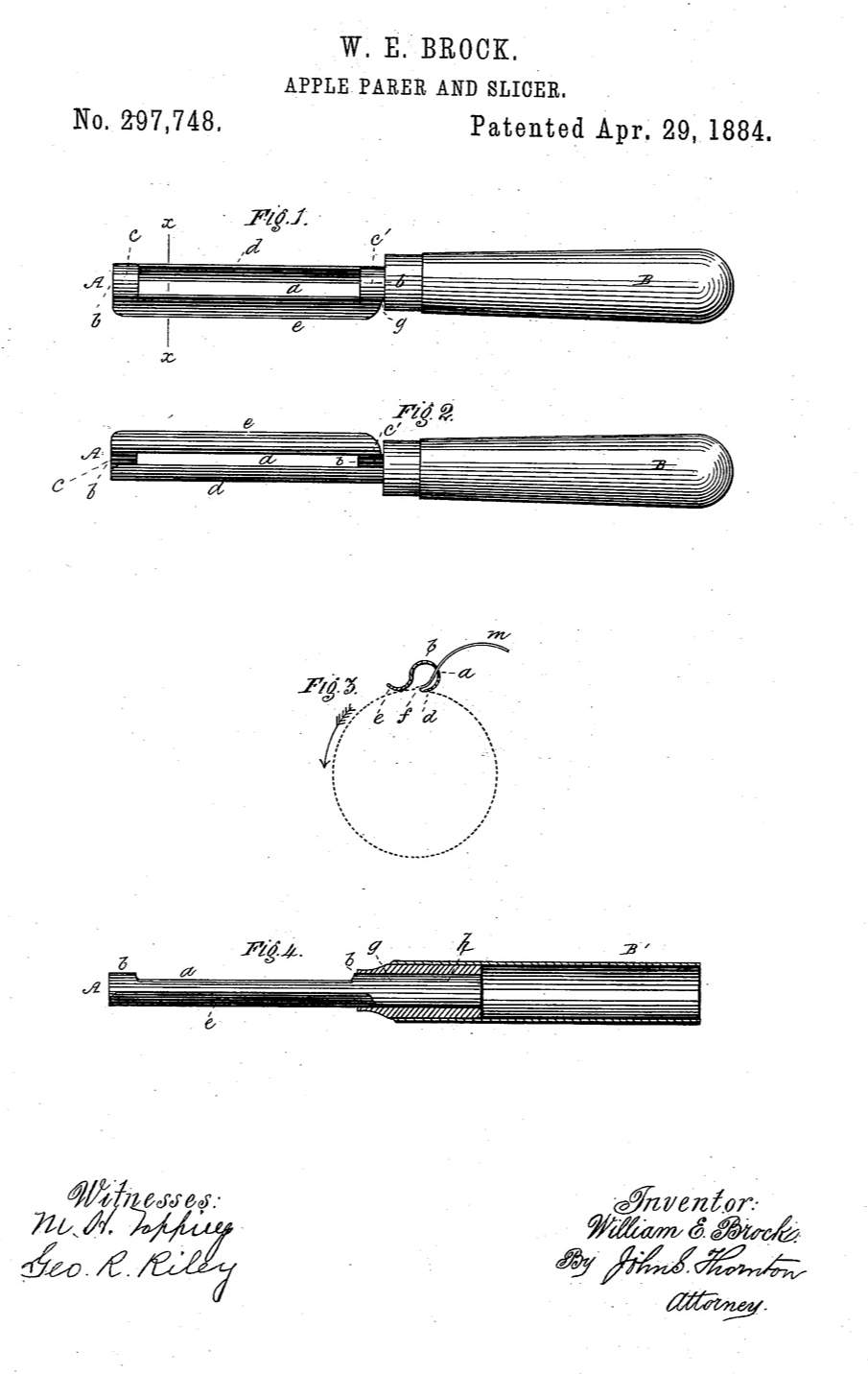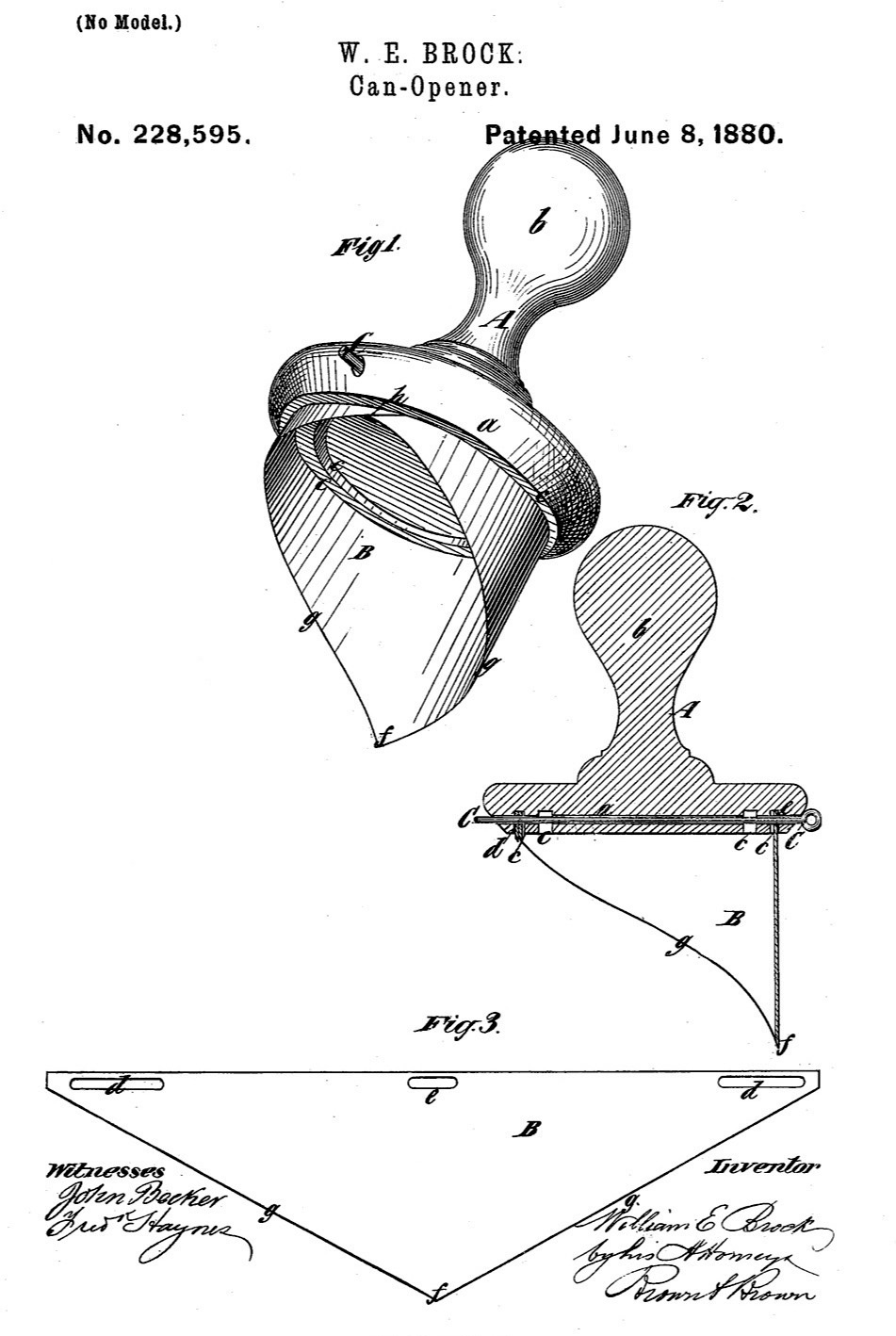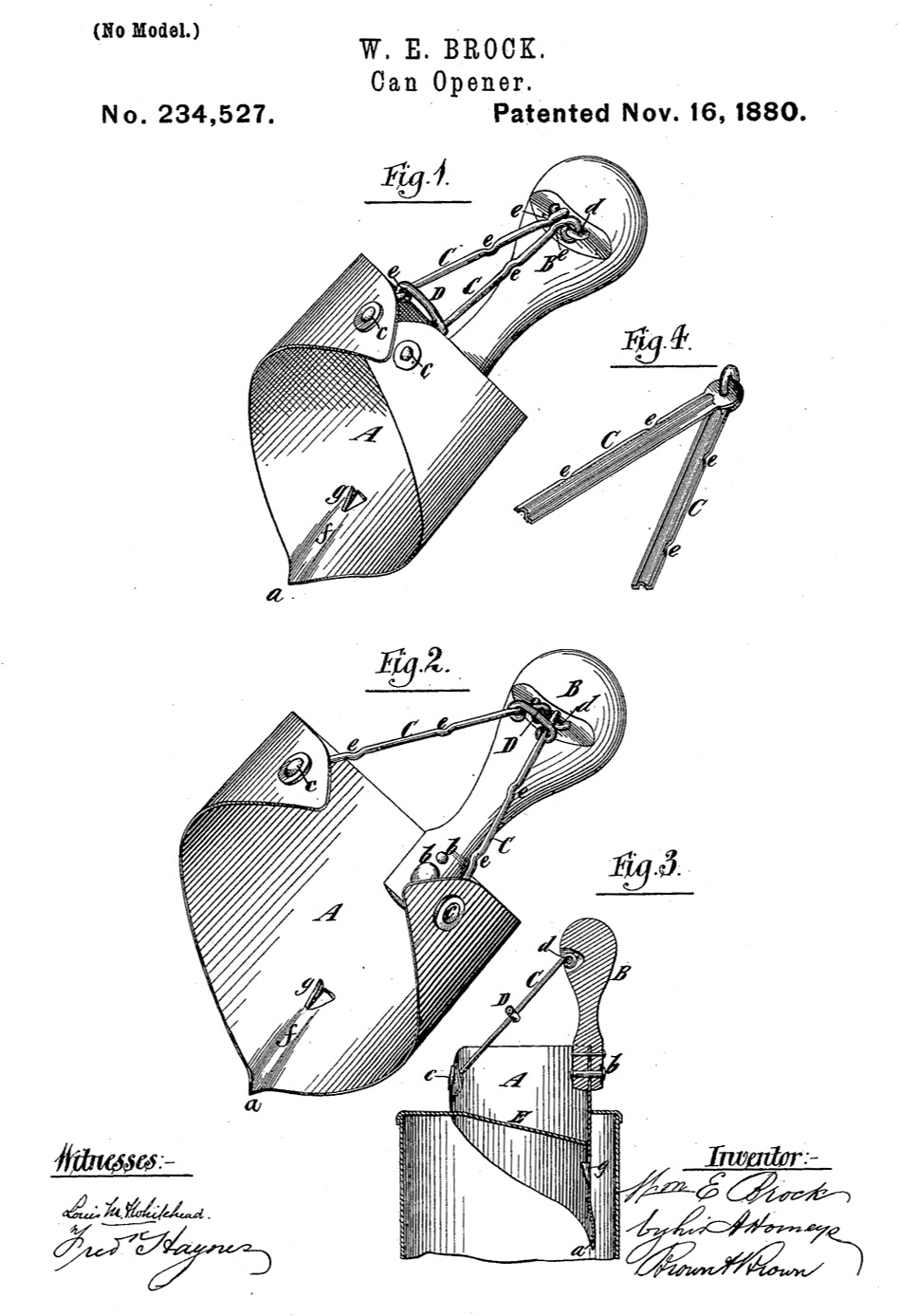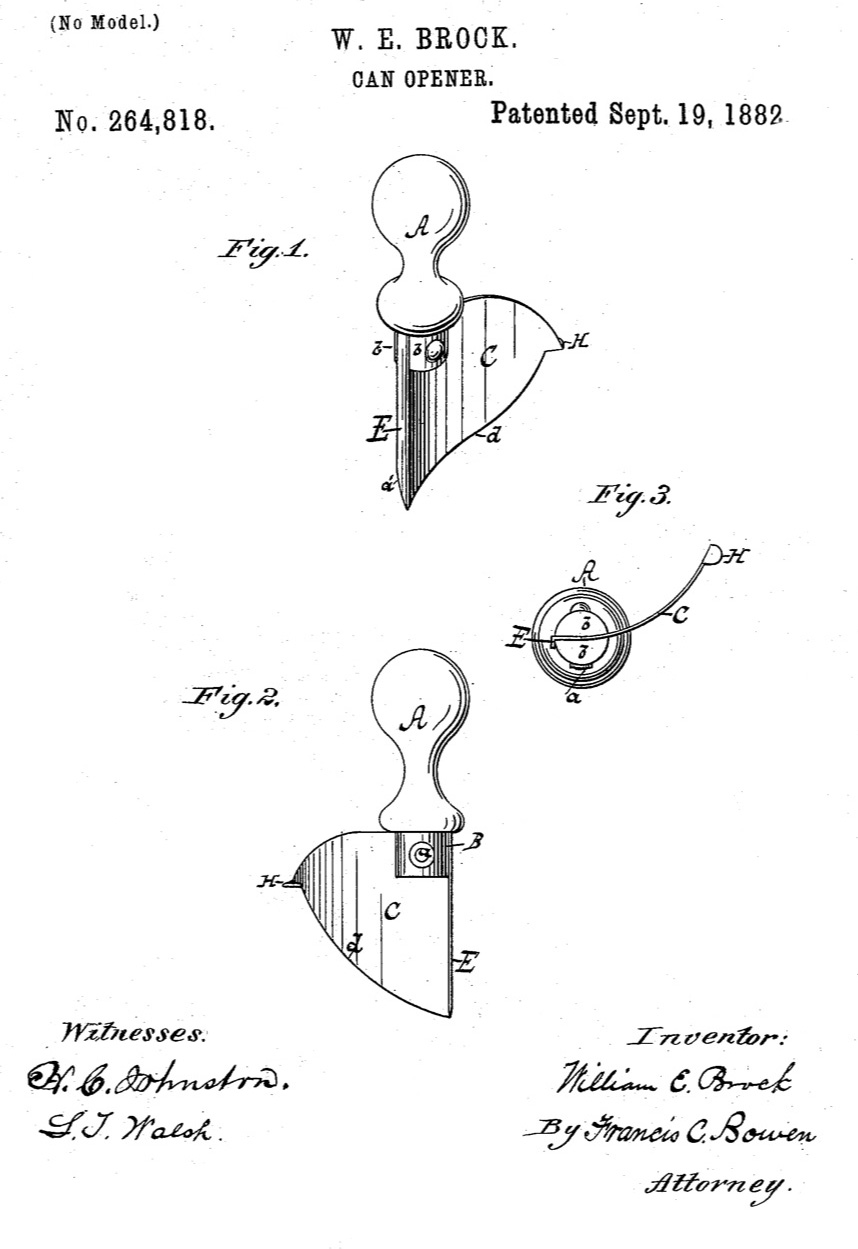
WILLLIAM E. BROCK of Plainfield, New Jersey, was an inventor with a penchant for coring, paring, slicing and peeling.
He was granted six patents from 1877 to 1889 for devices to do just that. And he even tried his hand at opening cans.
But kitchen devices played only a small part in Brock’s career. He was granted more than four dozen patents from 1867 to 1910, ranging from barbed wire to hammock spreaders to clothes dummies to wall paneling.
In the culinary world, Brock is best known for his QUICK PARER-CORER PAT. FEB . 19, ’84 NOV. 12 ’89, a simple, efficient 6-inch device that was mass-produced over the years.
There’s just one problem. The QUICK PARER-CORER is an exact match for his Patent No. 265,748, granted October 10, 1882, but the QUICK is marked with his Patent Nos. 293,940 and 414,856, granted respectively on February 19, 1884 and November 12, 1889. The only explanation is Brock wanted recognition for two of his other parer-corers, which are quite different.
His three other paring devices appear to be very workable, but there is no evidence they made to the market. They are Patent No. 193,220 granted July 17, 1877; Patent No. 294,362 (with cool wire handle) granted March 4, 1884; and Patent No. 297,748 granted April 29, 1884.
Brock also was granted three patents for can openers of the push-and-turn variety. They were Patent No. 228,595, granted June 8, 1880; Patent No. 234,527, granted November 16, 1880; and Patent No. 264,818 granted September 19, 1882.
All remarkable devices dating back nearly 150 years, but American can opener historian John Rowley of Alstead, New Hampshire, believes only No. 228,595 was manufactured. As for the other two, no examples have turned up in the 40-plus years Rowley has been collecting.
Brock’s 1909 obituary in the Courier-News, Bridgewater, New Jersey, said he had been a resident of Plainfield for 22 years. “He was a native of Vermont, and for many years lived in New York. He was an inventor for a number of years,” the obit said, in what was a very small tribute to such a remarkable inventor. Although some of his patents did not make it to market, many did, making him very successful.
_______
(c) 2020, Donald Thornton. All rights reserved.


